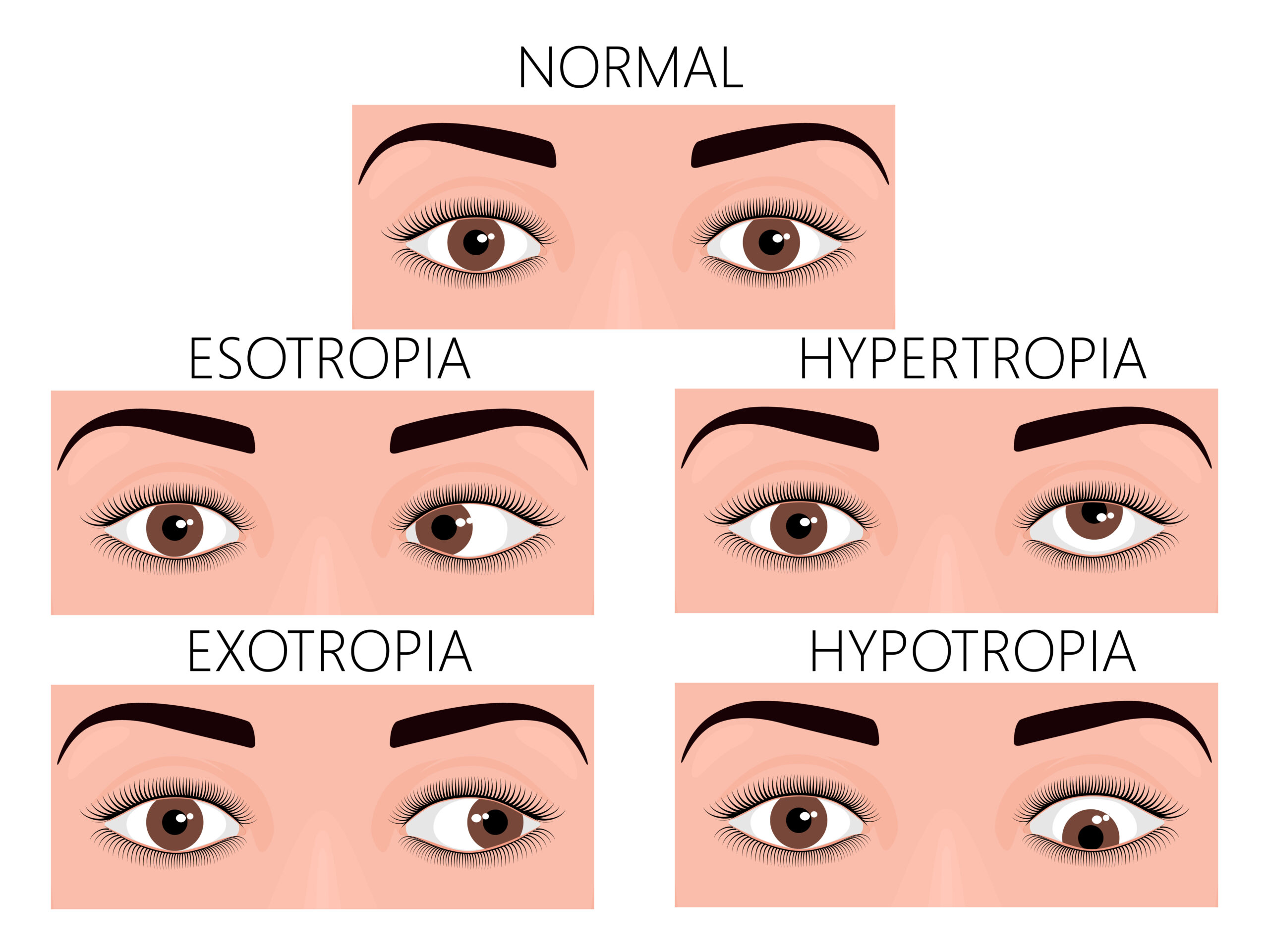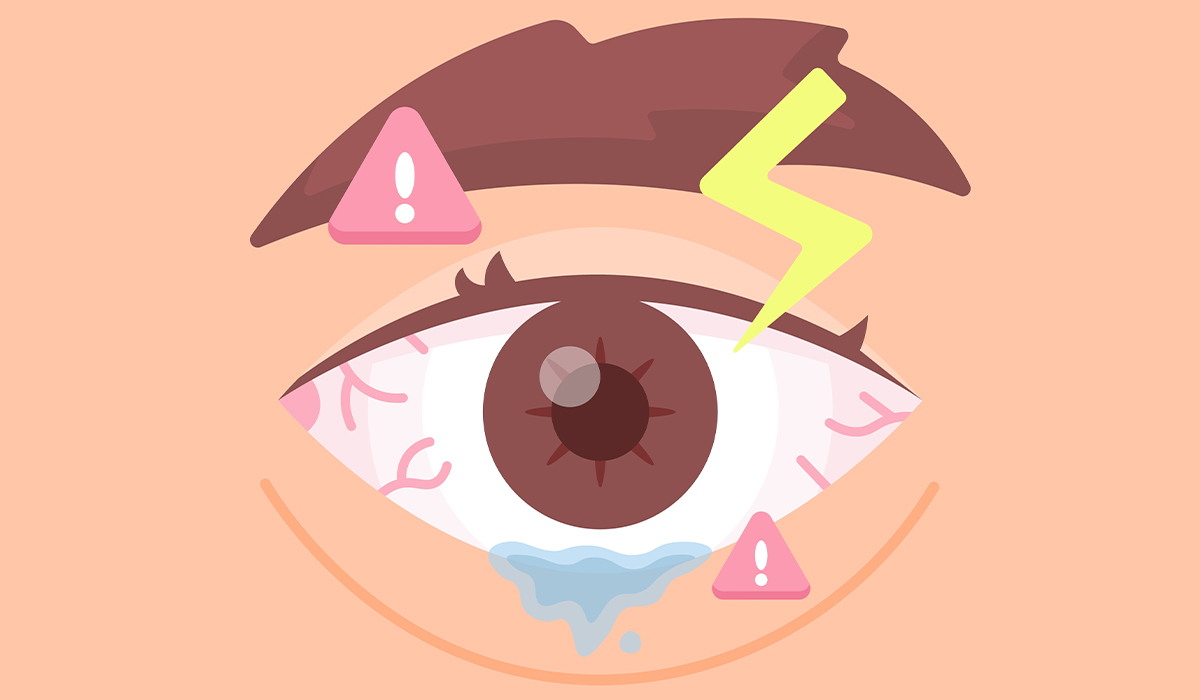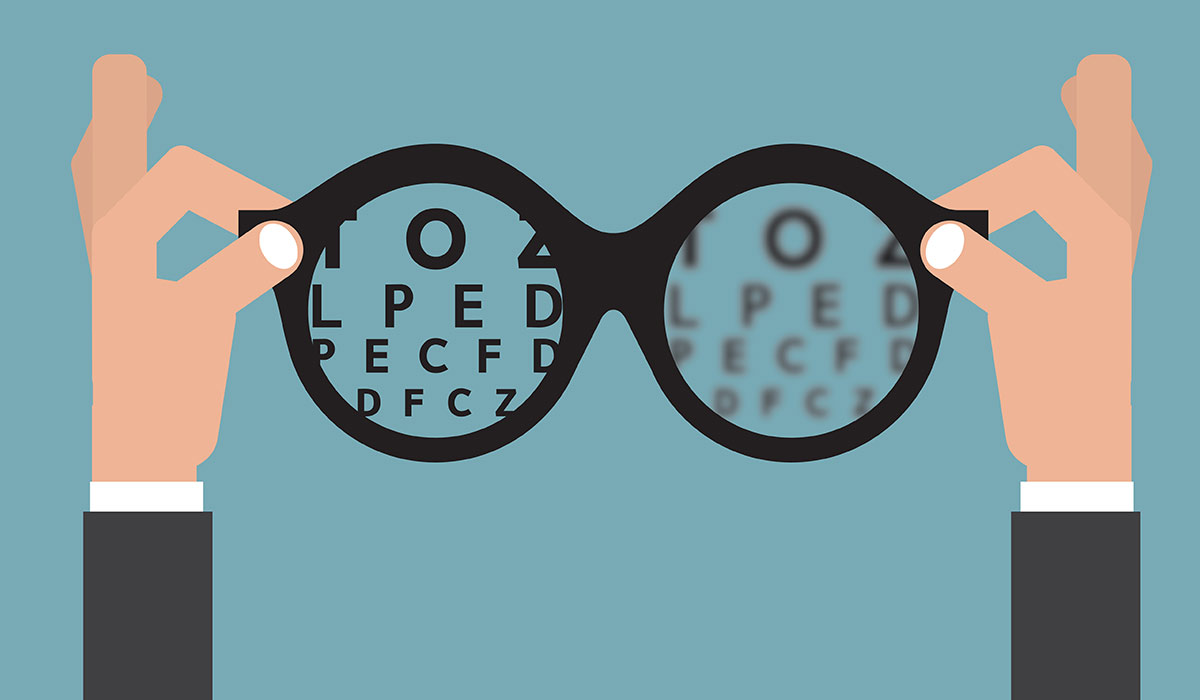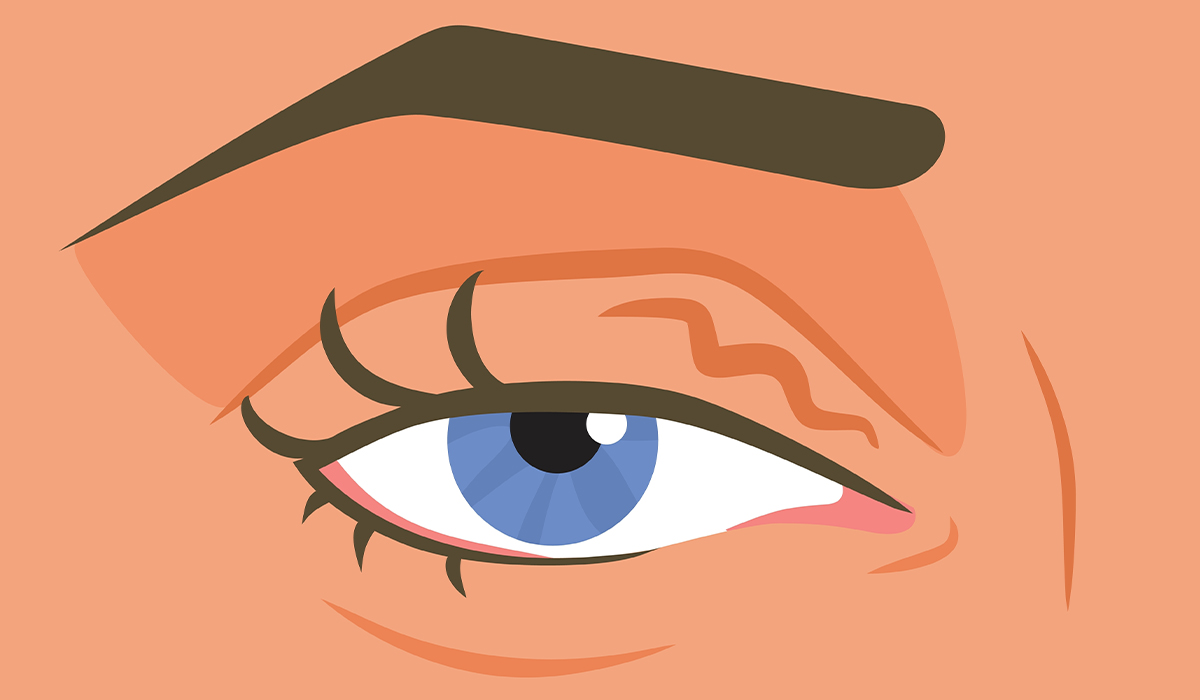Strabismus is a medical condition in which two eyes are not aligned when looking at some point. It typically happens in small children, though sometimes it can affect adults, for example, after strokes. Some strabismus are harmless and disappear in time, but some can indicate more severe conditions or even cancer of the eyeball.
There are six muscles attached to each of your eyeballs, which control the movement of your eyes. In strabismus, those muscles are not working correctly, resulting in eye misalignment.
In adults, double vision is often corrected by compensatory head positioning, such as tilting the head. In this position, double vision occurs less or does not occur. Sometimes, it is necessary to cover one eye permanently. In the case of children, eye misalignment leads to suppressing one eye’s image, which leads to the development of amblyopia (lazy eye). That's why it's important not to hesitate to visit an eye doctor if your child's eyesight is incorrect.

Causes of strabismus may be various. Usually, the exact cause cannot be identified, but some crossed eyes can be linked to other conditions. The most common include:
Children and infants are most often affected by strabismus in the first few months of their life. A newborn has misaligned eyes from time to time because their nervous system is not fully developed yet.
When a child is three months old, the so-called fixation is developed, meaning looking and following an object appearing in front of the eye, and the brain can already merge two independent images from the right and left eye into one. Thanks to this, eyes are parallel.
After three months old, if the child still has strabismus, they should be consulted by an ophthalmologist. Occasional squinty eyes, however, may be present in older infants, especially when looking at objects very close to the face.
The most common cause of strabismus in children is visual impairment. Still, it should be kept in mind that crossed eyes can indicate much more severe conditions, such as uveitis (developing as a result of intrauterine infection, e.g., toxoplasmosis, cytomegalovirus), disorders of the eyeball (cataract, retinal dysplasia), cancerous tumors (retinoblastoma – the most common cancer of the eyeball in children).
Therefore, every squinting child should be consulted by an ophthalmologist to exclude more serious disorders and implement treatment. Delay in treating strabismus can lead to the repression of the image from one eye and the development of amblyopia (lazy eye)![]() . Treatment of lazy eye is effective until age 7, so it is crucial to take this matter seriously.
. Treatment of lazy eye is effective until age 7, so it is crucial to take this matter seriously.
Strabismus can be divided into the following groups![]() :
:
Accommodative esotropia happens when an individual has uncorrected farsightedness that leads to the eyes turning inside, towards the nose. It usually affects people with farsightedness greater than +2.00![]() and a family history of strabismus associated with farsightedness. It typically starts around the age of 3.
and a family history of strabismus associated with farsightedness. It typically starts around the age of 3.
Intermittent exotropia is the most common type of eye misalignment. Strabismus is not constant and applies to one eye looking at the object while the other turns outwards. At first, it happens only when the eye fixates on the distant object, but over time, strabismus progresses and is also present when looking at the near objects.
Intermittent outward strabismus![]() most often happens in small children.
most often happens in small children.
In infantile esotropia, one or both eyes of the baby are turned inwards. Its onset is in the first six months of life, hence the name – infantile. It typically is not associated with farsightedness and occurs when a child looks far and near.
Crossed eyes may at first happen occasionally, but over time, they become constant and can’t be corrected with glasses. In most cases, the child with crossed eyes will require surgery on eye muscles that pull the eye. If left untreated, infantile esotropia![]() leads to a lack of depth vision and not being able to merge the images from both eyes into one.
leads to a lack of depth vision and not being able to merge the images from both eyes into one.

Up to 5%![]() of the population is affected by strabismus. In the United States, 5-15 million people are affected by strabismus.
of the population is affected by strabismus. In the United States, 5-15 million people are affected by strabismus.
The primary symptom of strabismus is crossed eyes. However, some eye misalignment is not constant and can be seen only in specific situations, so it might be challenging to notice. In adults with crossed eyes, double vision![]() or tilting the head occurs. Sometimes, people with strabismus close or cover one eye to improve their vision when looking at something.
or tilting the head occurs. Sometimes, people with strabismus close or cover one eye to improve their vision when looking at something.
A lazy eye develops in children with untreated strabismus, meaning the brain ignores images from one eye to avoid double vision. Symptoms such as bumping into objects, tripping, problems with sports games, or reaching for toys may be present in those children.
If strabismus is associated with muscle or nerve diseases, symptoms of those conditions can accompany it. Those symptoms include muscle weakness, paralysis, or speech difficulties.
If a child has strabismus that stays untreated, they may turn or tilt their head to correct their vision. Then, torticollis may develop, shortening the neck muscles on one side. As a result, further posture defects, headaches, back pain, and face asymmetry are developing.
In children with untreated misaligned eyes, mental problems frequently occur when they grow into teenagers. It happens due to self-image issues caused by crossed eyes.
Some people might be at a higher risk of developing strabismus. The risk factors include:
The doctor diagnoses strabismus based on an eye examination and medical history. The questions you can expect when going to or taking your child to an eye doctor include:
Every child with strabismus that persists after four months of age should have an eye examination performed by an ophthalmologist. Most eye misalignments can be detected just by looking at the child. To determine the cause and advancement of the condition, the doctor may perform the following tests:
Treatment for strabismus has a variety of options. Your doctor will choose the right one for you. Treatment options include:

If your or your child’s strabismus is not treated correctly, it can lead to complications, such as:
If treatment of strabismus is started early, immediately after the abnormality becomes visible and at the youngest possible age of the child, complete recovery is possible. For this purpose, combining several treatment methods (such as glasses or contact lenses, treatment of amblyopia, and ocular muscle surgery) and good cooperation with the child’s doctor is necessary.
In children and adults, paralytic strabismus may regress due to appropriate causal treatment, but it may also remain. In such patients, surgical treatment of the eye muscles is necessary.
Strabismus can’t be prevented. However, you can ensure it is caught in time and appropriately treated by observing your child and asking your child’s physician for testing. It’s important not to wait for treatment as untreated eye misalignment may lead to lazy eye.
Early after birth, an ophthalmological examination should be performed in children born prematurely, in whom refractive errors and strabismus are more common than in children born at term, and in children from families in which there is a family history of:
You should see an ophthalmologist (eye doctor) if you notice your or your child’s eye turns. Note some vital information about strabismus to tell your doctor on your visit, such as if eye misalignment is constant, if it is always the same eye turning, and if it gets worse over time. Contact an eye doctor if you notice the following symptoms:
Suppose the strabismus happens suddenly and is accompanied by facial muscle weakness, weakness of the limbs, or speech difficulties. In that case, you should seek emergency medical attention since it may be the symptom of the stroke.
Table of Contents

An ophthalmologist is an eye doctor. They are trained to diagnose, treat, and manage eye and vision conditions. Each part… read more »

Eye infections are common conditions where an eye becomes red, itchy, and painful. What are the common causes? How is… read more »

Myopia, also called nearsightedness, is an eye condition in which distant objects appear blurry. Here is everything you need to… read more »

Albinism is a genetically determined disease. See how to spot the first signs of albinism. Learn about the risks associated… read more »

Eye twitching, what science individuals call myokymia, is when your eye muscle moves by itself again and again without you… read more »

Blurry vision is a symptom that can indicate a minor eye condition, but also a systemic disease or cancer. Find… read more »

A cataract occurs when the natural eye lens becomes cloudy. The condition is most often associated with older age. When… read more »

Astigmatism is one of the most common vision defects in the world. It causes blurred vision of objects both at… read more »

Eye drops are liquid medications designed to be applied directly into the eyes for various purposes. They are used to… read more »